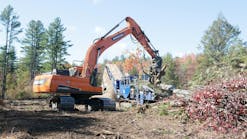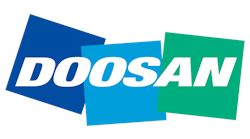Jim High is the owner of Maryland’s Baltimore Boating Center, a certified Clean Marina, “The checklist to become a certified Clean Marina includes having a stormwater plan, an emergency handbook and safety data sheet, monitoring of volatile organic compounds, and a recycling program.”
High says he got involved with the Maryland Clean Marina initiative when he assumed ownership of the facility in the 1980s. With 70 slips and 125 high-and-dry storage racks, full mechanical service, and full discount marine store, High says his facility is “a busy place for families and boat owners accessing the recreation and fishing opportunities of the Chesapeake Bay,” which is a 10-minute boat ride away.
About 100 marinas in Maryland are certified through the state’s Department of Natural Resources (DNR). Having served as an advisor on the Clear Creeks program of a local watershed area, High is committed to good stewardship of water resources.
The Baltimore Boating Center uses the Snout inlet protection device from Best Management Products Inc. Since 1999, more than 65,000 installations of the Snout have been protecting surface waters across the US, the UK, and the US Pacific territories, says T. J. Mullen, founder of the company and inventor of the Snout.
The company, with offices in Lyme, CT, and Baltimore, MD, had a background in both the stormwater and sanitary sewer business. Mullen says, “We saw the need for the quality of stormwater runoff to be improved, but most structure-oriented devices were expensive. We wanted to provide simple and affordable solutions that municipal engineers and regulators would actually use.”
He said the quirky name came about because the product “kind of looked like a nose, in profile, and we wanted the name to be memorable—and everybody remembers the Snout.”
The device is made of marine-grade fiberglass and marine-grade hardware, and, like a boat, it is made in an open mold, creating a strong, lightweight, and resilient product. While it is “flexible enough to withstand intense dynamic stresses,” says Mullen, it weighs only 15 pounds and is easy to handle, compared to something that could weigh 200 pounds if it were made of cast iron or steel.
The design premise is also quite simple. “It relies on the fact that many pieces of trash and most oils are floatable, and heavier particles will sink; it’s just basic gravity.”
Further enhancing the Snout’s capacity is the Bio-Skirt, which, Mullen says, “targets oils and greases through its adsorption design. The Bio-Skirt is a really thick fabric and mildly hydrophobic—in other words, repelling water—but it does attract hydrocarbons.”
He says a typical Bio-Skirt can absorb a gallon of oil, “which if you think of a gallon of oil floating on water, that’s a lot of oil.”
High has been using the Snout for more than a decade. “We powerwash boats here, and the water from that has to be filtered and collected. I have four bays here that powerwash, and I have Snouts and Bio-Skirts on them. We collect the water from the cleaning; after it passes through this filtration system it is considered clean, and it’s then pumped into the sanitary sewer system.”
Although the effort is voluntary, High says, “Everyone has a stake in keeping our resources clean. This is the final place where stormwater enters the Chesapeake Bay. When regulators come out, you can show them you’re working hard for a small family facility that is doing their best to help the local environment.”




